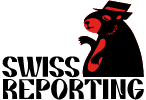Now Reading: Swiss Franc Strengthens Further Against the Euro Amid Market Turbulence
-
01
Swiss Franc Strengthens Further Against the Euro Amid Market Turbulence
Swiss Franc Strengthens Further Against the Euro Amid Market Turbulence

Swiss Franc Strengthens Further Against the Euro Amid Market Turbulence
Background
The Swiss franc (CHF) has long been considered a safe-haven currency, particularly during periods of economic and political uncertainty in Europe and worldwide. The euro (EUR), in contrast, represents the unified currency for much of the European Union. Historically, fluctuations in the EUR/CHF exchange rate have reflected shifts in market confidence and global events. In the past decade, the Swiss National Bank (SNB) has intervened at times to prevent excessive appreciation of the franc in order to protect Swiss exporters.
What is happening now
Recent data show the Swiss franc reaching new highs against the euro, currently trading at levels not seen since early 2023. The move is driven by renewed investor uncertainty linked to geopolitical tensions, economic slowdowns in neighboring countries, and speculation about future monetary policy from central banks. Financial analysts highlight that safe-haven flows into the franc have led to increased volatility in the currency markets, affecting both importers and exporters in Switzerland.
Impact on Switzerland
The strong franc brings mixed consequences:
- Exporters face challenges as Swiss goods become more expensive for eurozone buyers, potentially hurting sales and profits.
- Swiss consumers benefit, as imports from the eurozone are cheaper, lowering costs of goods and travel in Europe.
- Tourism in Switzerland may see a dip, as travelers from the eurozone find Switzerland less affordable.
Some business associations have called on the SNB to consider measures to control the franc’s strength, while economists caution that further interventions could have complex side effects.
What happens next
Market watchers are closely monitoring potential shifts in monetary policy from both the SNB and the European Central Bank. Any change in interest rates, inflation outlook, or regional stability could influence the EUR/CHF exchange rate. Meanwhile, Swiss businesses and policymakers are preparing for prolonged currency volatility. The situation is expected to remain fluid, with further updates likely as new economic data emerges.





















